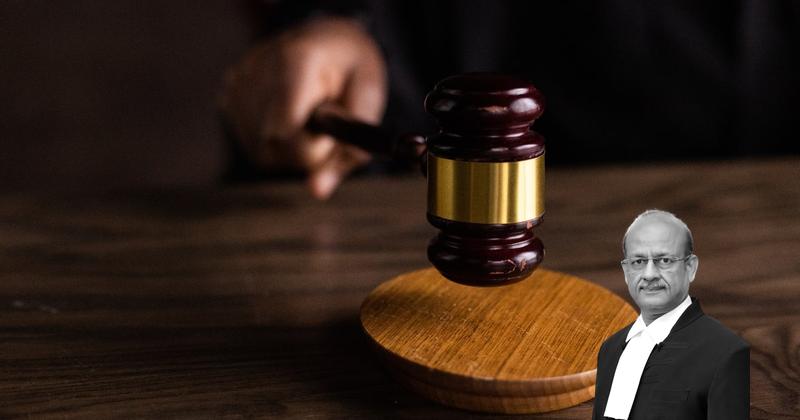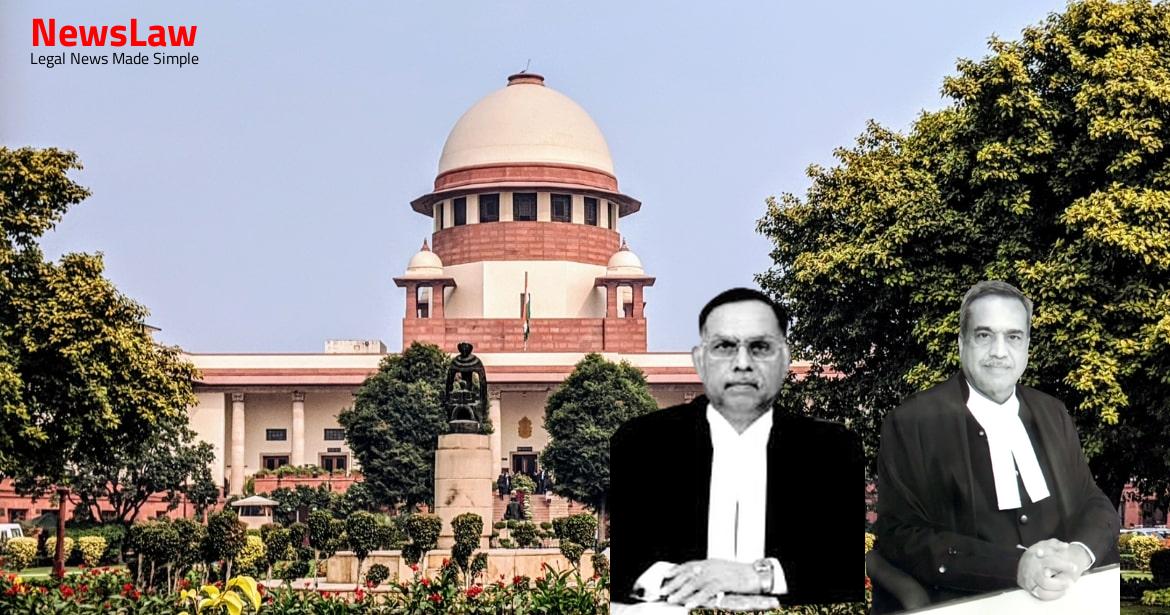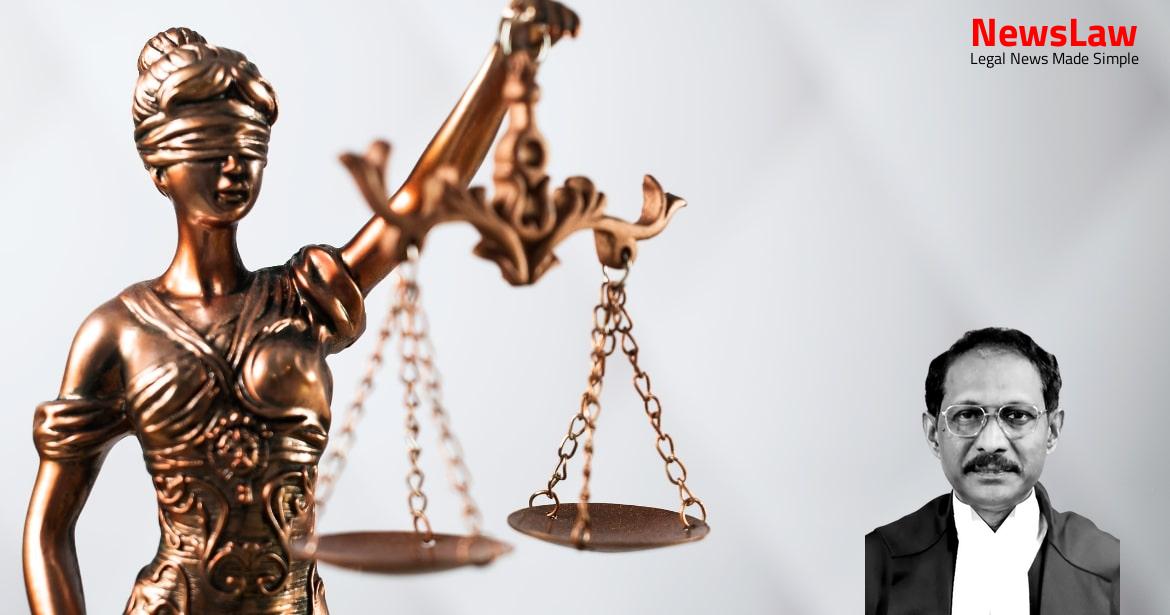(hereinafter, “corporate debtor”) for enabling its sale, and after realisation of its value, for distributing the proceeds in accordance with the provisions of the Insolvency and Bankruptcy Code, 2016 (hereinafter, “IBC” / “Code”). Since the dues remained unpaid, PVVNL attached the corporate debtor’s properties by Order No 1048, dated 12.01.2016. The liquidator’s position ultimately led the NCLAT to direct the District Magistrate and Tehsildar, Muzaffarnagar to immediately release the attached 3 property in its favour so as to enable sale of the property, and after realisation of the property’s value, to ensure its distribution in accordance with the relevant provisions of the IBC. In terms of the 2003 Act, and the regulations framed under it, including the Uttar Pradesh Electricity Supply Code, 2005 (hereinafter, “2005 Code”), a special mechanism for recovery of electricity dues existed. Counsel urged that provisions of the 2003 Act (Sections 42, 45 and 56) and the 2005 Code (Clauses 4.3 and 6.15), prescribed the mechanism for recovery of electricity charges.
Rainbow Papers Ltd., in which this court held that by virtue of a security interest created in favour of the government for tax claims under the Gujarat Value Added Tax Act, 2003, tax authorities i.e., the government, was a secured creditor under the IBC. Additionally, the term “transfer” was defined under the IBC to mean: “Includes sale, purchase, exchange, mortgage, pledge, gift, loan or any other form of transfer of right, title, possession or lien.” It was urged that a reading of the definitions of ‘security interest’ and ‘transfer’ indicated that the intent of the IBC was to include, in the concept of ‘security interest’, all claims, including statutory claims arising in law, against the corporate debtor. It was argued that in terms of Section 52(3), before realization of security interest by secured creditors, the liquidator had to verify the existence of security interest from the records maintained by an information utility or by such other 6 means as may be specified by the Insolvency and Bankruptcy Board of India (hereinafter, “Board / IBBI”).
Learned counsel emphasized that even under the old Companies Act, 1956, Section 529A provided priority to the debts due to the secured creditors and the workers, and Section 530 made payment of taxes subject to the priority embodied in Section 529A. Learned counsel submitted that electricity dues did not enjoy any priority, and cited High Court rulings, especially the judgment of the Calcutta High Court in The West Bengal State Electricity Distribution Company Limited v. Despite Sections 173 and 174 of the 2003 Act, by virtue of Section 238 of IBC, the provisions of the latter would prevail and have overriding effect. A financial creditor has been defined under Section 5(7) as, “A person to whom a financial debt is owed”. A “financial debt” is defined by Section 5(8) as a debt which is disbursed against consideration for the time value of money. The Adjudicating Authority has to determine the existence of a default from the records of the information utility or on the basis of evidence furnished by the creditors, and communicate the same to the corporate debtor – this initiates the resolution process, which must be completed within 180 days from the date of admission of the application (Section 12), and can be extended beyond 180 days for a further period of not exceeding 9 90 days if the committee of creditors (hereinafter, “CoC”) by a vote of 75% of voting shares so decides. Anyone interested or willing to put the corporate debtor back to its rails can, under Section 30, submit a resolution plan to the RP, prepared on the basis of an information memorandum. (2) Where the resolution professional, at any time during the corporate insolvency resolution process but before confirmation of resolution plan, intimates the Adjudicating Authority of the decision of the committee of creditors 2[approved by not less than sixty-six per cent. (3) Where the resolution plan approved by the Adjudicating Authority 4[under section 31 or under sub-section (1) of section 54L,] is contravened by the concerned corporate debtor, any person other than the corporate debtor, whose interests are prejudicially affected by such contravention, may make an application to the Adjudicating Authority for a liquidation order as referred to in sub-clauses (i), (ii) and (iii) of clause (b) of sub-section (1). (5) Subject to section 52, when a liquidation order has been passed, no suit or other legal proceeding shall be instituted by or against the corporate debtor: Provided that a suit or other legal proceeding may be instituted by the liquidator, on behalf of the corporate debtor, with the prior approval of the Adjudicating Authority. Indian Overseas Bank the Adjudicating Authority is, “obligated to initiate liquidation process under Section 33(1) of the I&B Code.” It was also held that the Parliament did not empower the Adjudicating Authority “with jurisdiction or authority to analyse or evaluate the commercial decision of the CoC much less to enquire into the justness of the rejection of the resolution plan by the dissenting financial creditors.” Thus, on occurrence of any eventuality specified under Section 33, the liquidation process has to begin, as a matter of course – there is no choice in the matter. The liquidator has to issue a public announcement within 5 days from appointment in a prescribed format; the purpose of public announcement is to call upon creditors and others persons to submit their claims in relation to the corporate debtor.
After the admission of claims, the liquidator has to determine the value of the claims, for the purpose of distribution of assets of the corporate debtor. It states as follows: “(1) Notwithstanding anything to the contrary contained in any law enacted by the Parliament or any State Legislature for the time being in force, the proceeds from the sale of the liquidation assets shall be distributed in the following order of priority and within such period and in such manner as may be specified, namely:– (a) the insolvency resolution process costs and the liquidation costs paid in full; (b) the following debts which shall rank equally between and among the following:– (i) workmen’s dues for the period of twenty-four months preceding the liquidation commencement date; and (ii) debts owed to a secured creditor in the event such secured creditor has relinquished security in the manner set out in section 52; (c) wages and any unpaid dues owed to employees other than workmen for the period of twelve months preceding the liquidation commencement date; (d) financial debts owed to unsecured creditors; (e) the following dues shall rank equally between and among the following:- (i) any amount due to the Central Government and the State Government including the amount to be received on account of the Consolidated Fund of India and the Consolidated Fund of a State, if any, in respect of 14 (2) Any contractual arrangements between recipients under sub-section (1) with equal ranking, if disrupting the order of priority under that sub-section shall be disregarded by the liquidator.
Also Read: https://newslaw.in/supreme-court/legal-analysis-of-claim-for-loss-of-profit-in-delayed-contract/
This hierarchy or order of priority thus accords government debts [clause (e)] and operational debts
[clause (f)] lower priority than dues owed to unsecured financial creditors. Another feature is that amounts due to the government (i.e., payable into the Consolidated Fund of India or Consolidated Fund of a State) are ranked in the same manner as those of secured creditors who do not relinquish their security interest [Section 53 (1) (e) (ii)]. Further, efficiency enhancement and consequent greater value capture through the proposed insolvency regime will bring in additional gains to both the economy and the exchequer.” **************** ****************** *************** “For the remaining creditors who participate in the collective action of Liquidation, the Committee debated on the waterfall of liabilities that should hold in Liquidation in the new Code.
Dues to unsecured financial creditors, debts payable to workmen in respect of the period beginning twelve months before the liquidation commencement date and ending three months before the liquidation commencement date; 5.
Further, if the “debts owed to a secured creditor” is not restricted to the extent of the security, there would be broad scope for misuse of the priority granted under Section 52(1)(b), as even creditors who are not secured to the full extent of their debt would rely on the mere fact of holding any form of security, to recover the entire amount of their unpaid dues in priority to all other stakeholders. On the basis of the above discussion, the Committee agreed that the priority for recovery to secured creditors under Section 53(1)(b)(ii) should be applicable only to the extent of the value of the security interest that is relinquished by the secured creditor. In response to the comments received on this aspect from Parliamentary Debates on the Amendment Act in the Sixteenth Lok Sabha Session in 2018, the Report of the Insolvency Law Committee stated: “Section 53 of the Code places secured creditors who have relinquished their security above unsecured financial creditors. (1) A secured creditor in the liquidation proceedings may— (a) relinquish its security interest to the liquidation estate and receive proceeds from the sale of assets by the liquidator in the manner specified in section 53; or (b) realise its security interest in the manner specified in this section.
(6) The Adjudicating Authority, on the receipt of an application from a secured creditor under sub-section (5) may pass such order as may be necessary to permit a secured creditor to realise security interest in accordance with law for the time being in force. (9) Where the proceeds of the realisation of the secured assets are not adequate to repay debts owed to the secured creditor, the unpaid debts of such secured creditor shall be paid by the liquidator in the manner specified in clause (e) of sub-section (1) of section 53.” 34.
In case it chooses not to relinquish its security interest, and instead proceeds to enforce it without success or is unable to realize all its dues in the process of enforcement, it has to then perforce stand lower in priority, and await distribution of assets upon realization of the liquidation estate, by the liquidator, vis–vis the balance of its dues. There is sound logic in this, because those opting to ‘stand out’ and enforce security interest, are permitted to do so; in the event of excess recovery, they have to intimate and hand over such excess for distribution in liquidation proceeding; in case they are unable to recover their dues, for such of the dues as are outstanding, such secured creditors are ranked low. Sub-section (2) to Section 52 of the Code states that where the secured creditor realises the security interest, he shall inform the liquidator of such security interest and identify the asset subject to such security interest to be realised. Sub-section (7) to Section 52 of the Code, however, is important as it states that where on enforcement of the security interest, an amount by way of proceeds is in excess of the debts due to the secured creditor, the secured creditor shall account for and pay the excess/surplus amount to the liquidator from enforcement of such secured assets.
To protect the interest of the workmen where the secured creditor does not relinquish its security interest to fall Under Section 53 of the Code, Regulation 21A of the Insolvency and Bankruptcy Board of India (Liquidation Process) Regulations, 2016 has been enacted, and it requires that the secured creditor, who opts to realise its security interest as per Section 52 of the Code, has to pay as much towards the amount payable under the Clause (a) and Subclause (i) to Clause (b) of Sub-section (1) to Section 53 of the Code to the liquidator within the time and the manner stipulated therein. The workmen’s dues, even when the secured creditor opts to proceed Under Section 52 of the Code, are therefore protected in terms of Sub-clause (b) of Sub-section (1) to Section 53 of the Code. Clause (b) to Sub-section (1) to Section 53 states that the debts due in the form of workmen’s dues for a period of twenty four months preceding the liquidation commencement date and the debts owed to the secured creditor in the event such secured creditor has relinquished security in the manner set out in Section 52 of the Code shall rank equally between and amongst the workmen and the secured creditors. What is significant here is that under Clause (b) to Sub-section (1) to Section 53 of the Code, the workmen’s dues are for the period of twenty- four months preceding the liquidation commencement date. It is to be noted that the wages and unpaid dues owed to employees other than the workmen fall in Clause (c), which is below Clause (b) to Sub-section (1) to Section 53 of the Code. Sub-section (2) to Section 53 of the Code states that any contractual arrangements between recipients Under Sub-section (1) with equal ranking, if disrupting the order of priority under the said Sub-section will be disregarded by the liquidator. The unpaid dues of the workmen are adequately and significantly protected in line with the objectives sought to be achieved by the Code and in terms of the waterfall mechanism prescribed by Section 53 of the Code. The Code balances the rights of the secured creditors, who are financial institutions in which the general public has invested money, and also ensures that the economic activity and revival of a viable company is not hindered because it has suffered or fallen into a financial crisis.
By virtue of Section 56 of the 2003 Act, in the event of any person’s neglect “to pay any charge for electricity or any sum other than a charge for electricity” payable “in respect of supply, transmission or distribution or wheeling of electricity to him” (after a clear fifteen days’ notice in writing) “and without prejudice to his rights to recover such charge or other sum by suit”, a licensee (including a distribution licensee such as PVVNL) is empowered to disconnect electricity supply to such consumer or person. Clause 4.3 (f) (iv) of the 2005 Code is relevant, which inter alia provides as follows: “The outstanding dues will be first charge on the assets of the company, and the licensee shall ensure that this is entered in an agreement with new applicant.”
Clause 6.15 of the 2005 Code enacts that recovery of arrears shall be in accordance with the provisions of the Uttar Pradesh Government Electrical Undertakings (Dues Recovery) Act, 1958: “6.15 Recovery of Arrears (a) The payments due to the Licensee shall be recovered as per provision of Section 56 of the Act, and arrears of land revenue as per the provisions of the 25 U.P. If as a result of regular meter reading / inspection of installation of consumer, such charges / penalties levied as per this code or tariff schedule, shall become first due after 15 days of receipt of such a bill by consumer, and such bill shall be provided to the consumer not later than two billing cycle for that category of consumer).” 42.
Such an action is permissible only where the statutory conditions of supply authorise the recovery of outstanding electricity dues from a subsequent purchaser claiming fresh connection of electricity, or if there is an express provision of law providing for creation of a statutory charge upon the transferee.” This court held that the creation of a charge need not necessarily be based on an express provision of the 2003 Act or plenary legislation, but could be created by 26 properly framed regulations authorized under the parent statute. This is evident from the order of the NCLAT which clarified that PVVNL also came under the definition of ‘secured operational creditor’ as per law. The repeated reference of lowering of priority of debts to the government, on account of statutory tax, or other dues payable to the Central Government or State Government, or amounts payable into the Consolidated Fund on account of either government, in the various reports which preceded the enactment of the IBC, as well as its Preamble, means that these dues are distinct and have to be treated as separate from those owed to secured creditors.
Further, the very inclusive definition of ‘State’ under Article 12 by referring to Government of India, the Government of each of the States and the local and other authorities, makes it clear that a ‘State Government’ and a local or other authorities, are different and that they fall under a common definition only for the purpose of Part-III of the Constitution. While the term “State” may include a State Government as also statutory or other authorities for the purposes of part-III (or Part- IV) 28 of the Constitution, the term “State Government” in its ordinary sense does not encompass in its fold either a local or statutory authority”. The International Airports Authority is one such corporation created under the Act with no share capital but which has its own properties, its own fund, accounts, employees and capable of lending and borrowing and entering into contracts. ”
In other words, dues payable to statutory corporations which do not fall within the description “amounts due to the central or state government” such as for instance amounts payable to corporations created by statutes which have distinct juristic entity but whose dues do not constitute 29 government dues payable or those payable into the respective Consolidated Funds stand on a different footing. In that case, the issue involved was interpretation of Section 48 of the Gujarat Value Added Tax Act, 2003 which enacted that any amount payable towards tax or penalty by any person would constitute a ‘first charge’ on the property of such dealer or person. The State contended that the non-obstante clause in the state enactment and the non-obstante clause in the IBC operated at different fields, and the State had to be treated as a ‘secured creditor’ by virtue of Section 48 of the state act. Rainbow Papers (supra) did not notice the ‘waterfall mechanism’ under Section 53 – the provision had not been adverted to or extracted in the judgment. In any event, the judgment has not taken note of the provisions of the IBC which treat the dues payable to secured creditors at a higher footing than dues payable to Central or State Government. Anthony Paul Benthall that: “When two words of different import are used in a statute, in two consecutive provisions, it would be difficult to maintain that they are used in the same sense…” This idea is reflected in a subsequent judgment in Brihan Mumbai Mahanagarpalika & Anr.
The IBC would prevail over the Customs Act, to the extent that once moratorium is imposed in terms of Sections 14 or 33(5) of the IBC as the case may be, the respondent authority only has a limited jurisdiction to assess/determine the quantum of customs duty and other levies.
(ii) After such assessment, the respondent authority has to submit its claims (concerning customs dues/operational debt) in terms of the procedure laid down, in strict compliance of the time periods prescribed under the IBC, before the adjudicating authority. AJ Agrochem, Section 16G of the Tea Act, 1953 which required prior consent of the Central Government (for initiation of winding up proceedings) was held to be overridden by the IBC. The position of law with respect to primacy of the IBC, is identical with the position discussed in 33 Sundaresh Bhatt and Duncan Industries (supra) [refer also: Innoventive Industries (supra), CIT v. Section 77 of the Companies Act, 2013 reads as follows: “77. (4) Nothing in sub-section (3) shall prejudice any contract or obligation for the repayment of the money secured by a charge.” Section 78 enacts, that when a company whose property is subject to charge, fails to register it, the charge holder (or the person entitled to the charge over the company’s assets) can seek its registration.
Based on that application, the liquidator had filed an application before the NCLT for modification of its order dated 21.08.2018, and contended that PVVNL also came under the definition of ‘secured operational creditor’ in realization of its dues in the liquidation proceedings as per law.
The appeal is dismissed, subject to the above direction, without order on costs. RAVINDRA BHAT]
Case Title: PASCHIMANCHAL VIDYUT VITRAN NIGAM LTD. Vs. RAMAN ISPAT PRIVATE LIMITED (2023 INSC 625)
Case Number: C.A. No.-007976 / 2019



